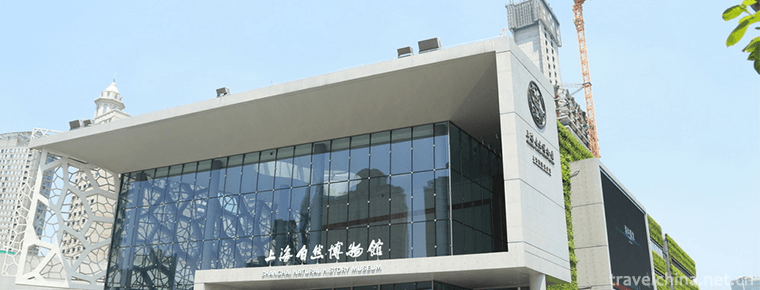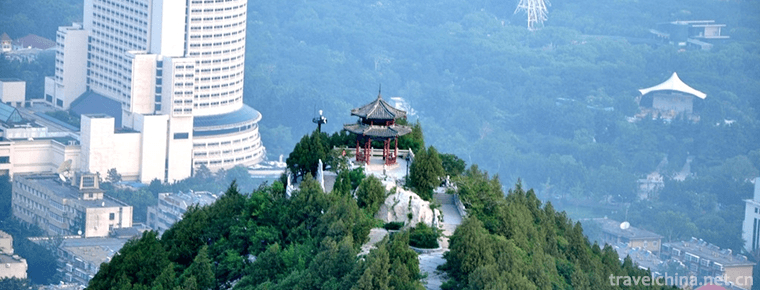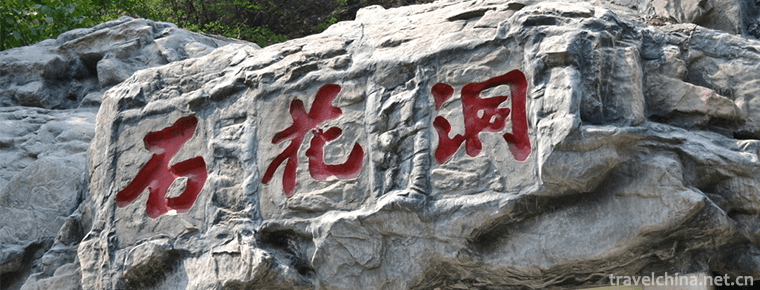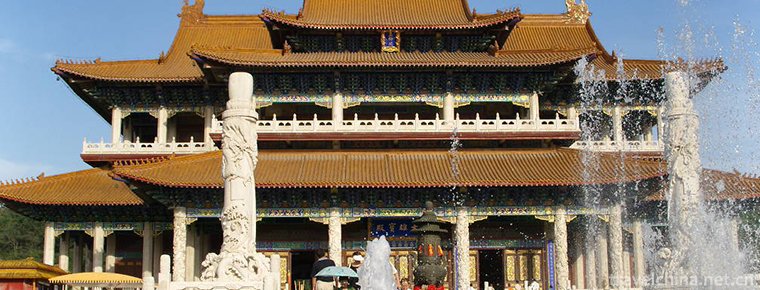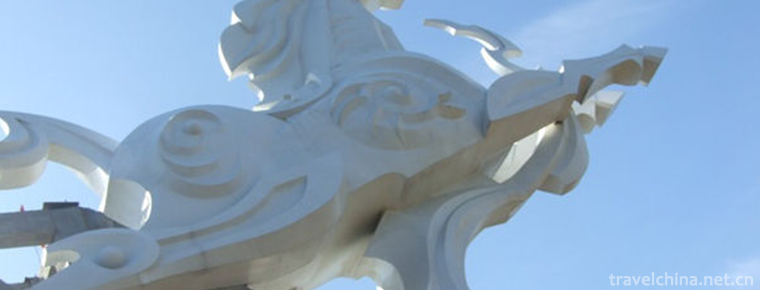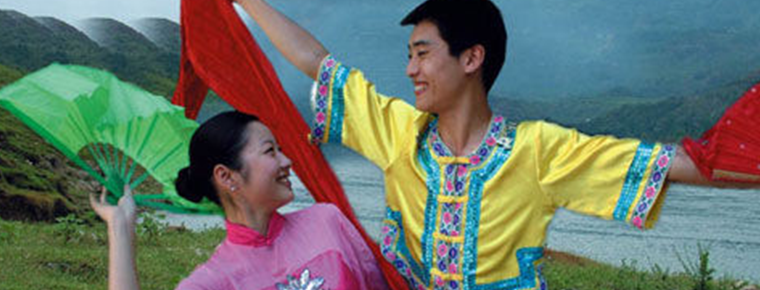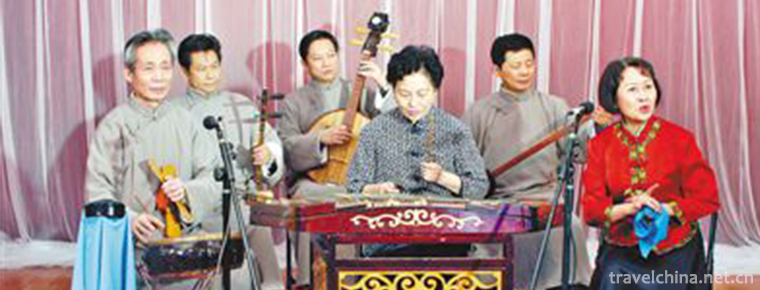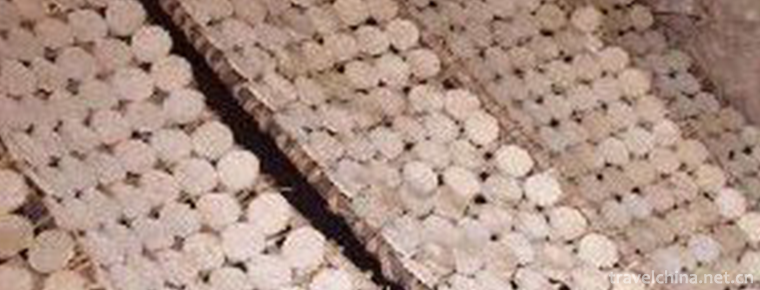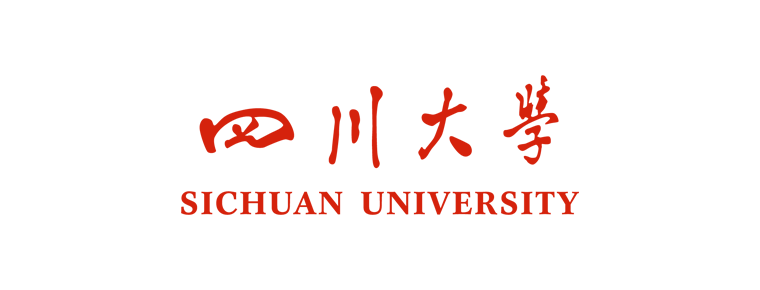Yuehui Garden Scenic Spot
Yuehui Garden Scenic Spot
Yuehui Garden is a large private garden located in Dongguan, Guangdong Province. It is the representative of Lingnan Garden. There are 108 garden attractions such as buildings, pavilions, pavilions, water pavilions, corridors, stone bridges, rockery and so on. Waterways linger in the garden, linking up the various scenic spots in the garden. Water flows with the garden and the garden is watery.
The natural living water of Dongjiang River is diverted skillfully in the park. The area of rivers, lakes, streams and streams is more than 240 mu, accounting for about 30% of the total area. Yongwen Museum is the main building in the garden. It covers an area of about 10,000 square meters. It is an ancient-style Pavilion in Lingnan, and has a large collection of Lingnan cultural and artistic works. Nanyun Hall is a classical theatre, which can listen to traditional Cantonese opera. Wuyuan Square, Poetry Gallery, Guishui Bridge and many other scenic spots, exquisite craftsmanship, rich in Lingnan culture. Yuehui Garden is not only a beautiful Lingnan Garden, but also a cultural treasure of Lingnan folk customs, ancient Lingnan architecture, garden art, sculpture art, opera art and treasure art.
Dongguan Yuehui Garden takes Lingnan culture as its brand goal. By digging deeply into Lingnan history and culture, and endowing "Yuehui Garden" with the material from cultural accumulation, Yuehui Garden not only occupies an important position in the history of Chinese architecture, but also stands alone in the field of culture and art, becoming a bright pearl of Lingnan culture! Lingnan gardens, Royal gardens in Beijing and Jiangnan gardens in Suzhou are also called classical gardens. Yuehui Garden is the representative masterpiece of Lingnan Garden and the largest private garden in China.
Famous scenic spot
East Main Gate
The East Main Gate of Yuehui Garden is the main entrance of Yuehui Garden. The middle main hall is a double eaves building with a width of about 32.6 meters and a depth of about 18.9 meters and a height of about 17 meters. Its volume and balance are all designed with Ming and Qing architecture, and the dome arch, beam and column are decorated with Hexie paintings, which make it more magnificent and solemn. The two sides of the main entrance are connected by the corridor and the main hall, forming a spacious front square. Fangfang sparrow, forehead (lower beam between columns), etc. are also decorated with spindle paintings. Outside the East Main Gate, there is a combination of corridors and chambers in the north and south. There is a small garden view. The garden is separated from the large scenic spots in the garden by the wall and becomes a scenic spot of its own. There are exotic stones in the North Corridor Garden and beautiful flowers at four seasons. Flowers and trees are scattered in the South Corridor Garden. Several emerald bamboos are elegant and unusual. The 1200m enclosure, supported by a unique honeycomb hive (honeycomb dome), is also unique to Yuehui Garden and a major architectural style of Yuehui Garden.
Yu Wen Museum
Yuehui Garden was originally meant to be flourishing in water and grass, but in extension, it meant to be flourishing and prosperous. Yuehui Garden is the largest and most functional antique building group in Yuehui Garden. It consists of foyer, compartment, jade paper hall, attached building, Qingfeng corridor, Mingyue corridor, sun-viewing pavilion, moon-viewing pavilion, Hawthorn pen pavilion, Mohua Pavilion and Yuanwen Pavilion. As the main center of Yuehui Garden complex, three main buildings and east-west symmetrical cross-water corridors are arranged in turn to form a whole, forming a traditional three-in-four courtyard, standing in the green bushes, surrounded by streams, rich in water village style. The whole building is constructed with 365 columns, which means 365 days a year, and every day is as good as expected. Yuanwen Museum is the exhibition center of Lingnan Culture and Art Museum in Yuehui Garden. It is orderly in primary and secondary levels, with magnificent and solemn weather. It integrates national tradition, local characteristics and the spirit of the times. The Library covers an area of more than 10,000 square meters, which integrates collection, exhibition and academic research.
GUI Shui Bridge
Yuehui Garden Guishui Bridge is located on the Bank of Wuxiang Lake and Yingyue Lake. It has a sluice under it. It will make Dongjiang River change with the tide of Dongjiang River. It will change the water of Yuehui Garden and keep the water quality of the park clear forever. So it is called Guishui Bridge. There are poems as evidence: "Bridge from Dongjiang to Bishui, Garden from the main road to Qingchi". Guishui Bridge has unique Lingnan characteristics and rich image. Five pavilions on the bridge are arranged like plum blossoms. The body of the bridge is made of bluestone. The bottom of the bridge is composed of twelve piers of different sizes. The plane is in the shape of "I", with stairs on both sides. There are five glazed Cunjian pavilions on the bridge deck. The main Pavilion in the middle is a heavy eave, and its four corners are a single eave. Every full moon, from the front side of the bridge hole, each hole reflects in January, golden shaking, the moon lining the bridge, so that the lake scenery is more beautiful. Guishui Bridge is also the gateway to the green corridor. The bridge deck is more than 3 meters higher than the front garden. Even though the landscape around Wuxianghu Lake is undulating, it makes the green corridor have a sense of hierarchy, overlapping high and low, overlooking the bridge pavilion, enlarging the vision and giving a panoramic view of the beautiful scenery in the garden. It is "water should be born in the garden, because the garden works in the water".
Nan Yun Hall
Yuehui Garden is also one of the main buildings of Yuehui Garden. Located in the southwestern part of the Yawen Museum. Nanyun Hall, also known as Lingnan Opera Hall, is a unique building with Lingnan charm. The main entrance of Nanyun Museum is more than 40 meters wide and 18 meters high. The back end is a floor-style ancient stage, which is more than 15 meters long and 1 meter high. Nanyun Museum not only invites music masters from all over the world, guests of famous Cantonese opera actors and voters to sing together, but also the second floor of Nanyun Museum has been designated as Dongguan Cantonese Opera Museum. This will show the historical essence of Guangdong opera in our city, truly show the traditional features of Lingnan culture, so as to inherit and carry forward the excellent cultural traditions of Lingnan Cantonese opera. The south of Nanyun Hall is Yile Square. The square has ancient wood, deck chairs, paved ground, Nanyun Museum Yueyue floating around, the elderly lie idly in it, closed eyewitness festival, a cup of tea, is the fairyland on earth. On the front of the square is an open-air stage, Tianzhao Stage. There are also various performance arrangements. Linked to the stage is Qiyuxuan. Its appearance is also unique: the traditional volcanic wall has become a pure decorative landscape. Such a conception should not be mentioned as Lingnan Architecture, which is scarcely seen in the whole country.
Purple smoke cliff
Yuehui Garden Purple Yanya Cliff is built from heaven. The towering stone hill flies to the riverside. The ancient trees of mountain flowers and vines and wild fruits dot the mountains. The green cypress and pines, the cliff wall of cliff cave and the waterfall spring. This mountain is a natural stone hill in appearance. It uses multi-layer structure to sculpt caves and karst caves to connect with each other. It ingeniously uses the underground to build water treatment pools, circulating water system pools, the top of which is "Tianchi". Along the cliff path, it goes up and down from time to time. There are hidden rivers connected by stone bridges. There are caves on the waist of the hill leading to stone platforms. Looking down, if you are facing the abyss of Wanzhang, it is thrilling. When the sun goes down and the purple smoke is dense, reflecting a rainbow, it is even more intoxicating. Furongxuan, a drinking street in the south of Ziyan Cliff. "Tea-cooked wine is warm and comfortable to guests, and there must be new poems in the scent of flowers and moons." Why not have three drinks when you swim to a good time?
Five yuan square
Yuehui Garden Wuyuan Square is located in front of the Poetry Gallery, from the outside to the inside, a level step Qingyun Road, rising steadily. The first one at the eastern end is called Huiyuan Fang, and the first name of Xiucai is Huiyuan. The second one is called "Jieyuan Fang" and the first one is named "Jieyuan". The third one is called "Zhuangyuan Fang", and the first name of Jinshi is "Zhuangyuan". The fourth is called "Shiyuan Fang". After many years of assessment, the first scholar was admitted to the Hanlin Academy. He was also trained as an official in the Hanlin Academy. He came from a foreign Prefecture and a prefecture for many years. He had excellent political achievements and voices. He returned to Beijing to take an examination of the state policy and the way of governing the country. He got the first name of "scholar", or "scholar yuan" for short. In the Song Dynasty, there were "Longtu Pavilion", "Wenyuan Pavilion" and "Zhibao Moge". The fifth archway is called "Xingyuan Fang". After many years'examination, the cabinet's undergraduates got the first promotion of "Shangshu" by their own choices. In the Ming and Qing Dynasties, there were six Shangshu books, such as "Officials", "Hubu", "Rites", "Military", "Penal", "Engineering", and so on. They were only the first stage of "Xingyuan". They were also trained by emperors and kings through many years of "Shangshu". Observed, the best and Prince division, often to the prince ascended the throne and worshipped as prime minister, for each other, complement the country and prosper the country, known as "Xingyuan". Wuyuan Square is a unique building with deep implications. It climbs up the stairs, travels along the Qingyun Road, and travels among the colorful clouds.
Lotus Pond
Yuehui Garden Lotus Pool is located to the north of Yongwen Museum, south of Shuixian Cave, west of Lanfuyuan Garden and east of Rongyin Waterway. It is divided into two parts by Lotus Corridor: Mulian Pool in the West and Bath Lotus Pool in the east. There are two typical Lingnan small buildings at the north end of the lotus bath pool. The front of the Fuqin stage is Xiaoyin room (west) and Xiaoqin room (east). The two rooms are Bracelet Gables on the top of hard hills, three circular corridors, brick glazed bottles, column railings and rivers, double pillars arranged, with teahouses in the middle. The Xiaoyin Room is connected to the Lotus Gallery by the Hequ Bridge to the west. On moonlit nights, the water mist in the pool is winding, layers of jade pans bear golden dew. If the fresh wind brings in a burst of fragrance, refreshing. "Lingnan autumn rain as fine as silk, ink clouds dyed lotus pond. Love Tiantian lotus leaves, crystal pearls and dew provoke Acacia ", how poetic! __________
Winding Gallery
Yuehui Garden around Cui Corridor is a double-sided corridor structure, built around the garden, a total of more than 600, the corridor width is nearly 3 meters, the corridor column height is 3 meters, the full length is 3.2 kilometers, creating the first garden corridor in ancient and modern times. The corridor is curved and curved according to the shape and situation, piercing through the flowers and trees, winding and winding. It connects several groups of buildings in Yuehui Garden in the horizontal direction, enhances the spatial level and overall sense of the landscape, and becomes the traffic link of the garden. "Round the green corridor" is not a gallery flat cover. Every other section, there are "bracelet" Gables or top of Xieshan high, making the gallery cover ups and downs, colorful. The beams and eaves of the corridor are decorated with curly grass patterns. Every door building and Xieshan top node of the "bracelet" gable is decorated with elaborate brick carvings. The common patterns are "double blessing money" and various scroll patterns. In the corridor, couplets, paintings, flowers and trees are used to embellish the garden, which adds to the cultural connotation of Yuehui Garden.
Other attractions
San Si Qiao
The Siyuan River in Yuehui Garden separates Sansi Bridge from Sanyuan Bridge. Its East is Sansi Bridge. The bridge is unique in shape and connected by three bridges. It is a three-way bridge. Bridge body railings and rivers erect white stone square slab pillars with bracted flower heads and relief on white stone slabs. The shape of Santong Bridge is unique in the history of architecture and is originally created by Yuehui Garden. It's good to think twice at the end of the day. It's not foolish to think twice at the end of the day.
Four Seasons flower dock
Spring cuckoo, summer lotus, autumn cinnamon and winter plum are planted everywhere in the flower dock to show that the flowers are flourishing all the time, and they are not melancholy every season, which is the best place to appreciate flowers. Walk around the flower trees, pave the road with flower patterns, walk on them, then linger in the fragrance of flowers in the sky and the earth, happy and self-satisfied. People turn around flowers, flowers blossom for people. Among the hundred flowers, Qingqing loves me, and her affection is endless.
Banyan waterway
Jiahe opposite banyan trees, branches grow, fibrous roots flutter, forming a shade. Reproduce the unique style of the water village.
Bi Quan tea house
Tasting tea leisurely adds to elegance and interest!
Moon Lake residence
The largest catering service point in Yuehui Garden. Yuehu is a large restaurant with magnificent interior decoration, 68 banquets and private rooms. All kinds of delicacies, delicious!
Mustard Garden
The south of Lanyun Garden and the east of Sansi Bridge are built as a rockery and three shops for Mustard Garden. It is a bonsai garden in Yuehui Garden. Visitors can buy bonsai, antiques, calligraphy and paintings and various crafts here. Bonsai is a miniature landscape, with mustard seeds in the middle and large, so it is called mustard garden. Because "mustard hides in one", the main building of mustard garden is named "Tibetan Pavilion". There are corridors on both sides of the "Zangyi Pavilion" which are connected with the second floor. Each corridor has a group of combined Cunjian Pavilion, Jiaokao Pavilion and staggered leaf Pavilion. Facing the pavilion, there are two rockery mountains, Yangting Mountain and Wangting Mountain.
Lotus Pavilion
Furong Xuan is a specialty food street in Yuehui Garden. There are many specialty snacks in different parts of Guangdong Province. The variety of these snacks makes visitors full of happiness.
LAN Yun yuan
Yuehui Garden Mei Lan Zhuju four gentlemen, orchid is considered the most elegant. "Fragrant but not colourful". Zhang Yu's poems of the Ming Dynasty: "Can be white and yellow, nobody can also Fang themselves, inch heart is not big, tolerate a lot of fragrance". Chen Yi's poem says, "Youlan is in the valley, but nobody knows it. It's not fragrant and heavy, and the seekers are all over the hills." Lan is considered to have lush green leaves, soft stripes, no soft attitude, no vulgar meaning, the most pure fragrance, delicate fragrance, rich clothes, can be called delicate fragrance and childish. Yuehui Garden has a typical Lingnan courtyard beside the East Main Gate. It specializes in planting orchids for Lanyun and Lanfu.
Poetry Gallery
The Poetry Gallery is another spectacle showing the culture of Lingnan books, poems and paintings in Yuehui Garden. It is half a mile long, 230 meters long and nearly 4 meters high. It is located at the southern end of Yuehui Garden. The six corridors of the Poetry Gallery are stacked in turn, which enhances the sense of flexibility. The Poetry Gallery is a cultural corridor, with exquisite brick carving art performance, collects the new creation of Lingnan poetry, books and paintings, couplets of paintings, with poetry. Through poetry, calligraphy, traditional Chinese painting, sculpture and other art forms, to show the contemporary Lingnan customs.
Far rhyme Hall
An elegant building beside Wuxiang Lake - Yuanyuntang!
Hidden Dragon Stone
A couple of exotic stones before Yuehui Garden Ba Hui Spring reflected each other with the "Crouching Tiger" on the other side of Yuehui Garden!
Sleeping tiger stone
A couple of exotic stones before Bai Hui Spring reflected each other with the Tibetan Dragon on the other side.
Rainbow brook
Outside the Yawen Museum, there is a tortuous river, where the water is flowing and the fish are playing with the water!
Sleeping wind bridge
Mianfeng Bridge is one of the 16 bridges in Yuehui Garden, which connects Yuanwen Museum and Four Seasons Flower Dock.
GUI Xin Yuan
Guixinyuan is located to the west of Dongzemen. To the east of Biquan Teahouse. The pool is decorated with bricks and covered with square-stepped bricks. Various perennial panning plants are arranged in the pool. There are small islands in the pool and two small white stone bridges are erected. Biquan Tea House is located in the west of Guixin Garden, followed by Caiyunjian, which stands opposite Nanyun Hall. It is surrounded by green trees and beautiful environment. The design of the tea house is elegant and simple, and the varieties of tea and tea sets are varied. Accompanied by the ancient rhyme of the piano, "Draw water from Dongjiang River leisurely and cook Zhaozhou tea slowly", there is a feeling that everyone is drunk before a tea is drunk.
Characteristics of scenic spots
Layout style
Yuehui Garden has a delicate layout, which integrates the traditional art of Lingnan Garden with modern aesthetic taste. Building, pavilion, water pavilion, corridor, stone bridge, rockery
One hundred and eight scenic spots, including elegant and unique Lingnan ancient architectural style, are hidden between the ancient trees and famous trees, winding paths and moving scenery. A stream of clear Lingling lingers in the garden, linking up all the scenic spots in the garden. The water flows with the garden, and the garden is water-fed. The courtyard is deep, the lotus wind is all around, and the willows are light and drooping. It has a profound artistic conception of Tang poetry and Song poetry. Lingnan Garden and Royal Garden of Beijing (Summer Palace), Jiangnan Garden of Suzhou (Humble Administrator's Garden, Network Poetry Garden, etc.) are also known as the three major systems of Chinese classical gardens. Yuehui Garden is the representative masterpiece of Lingnan Garden and the largest private garden in China.
Environment introduction
Yuehui Garden introduces the natural living water of Dongjiang River skillfully. The waters of rivers, lakes, streams and Jianjian cover more than 240 mu, accounting for about 30% of the total area. Yongwen Museum is the main building in the garden. It covers an area of about 10,000 square meters. It is the crown of the ancient-style pavilions in Lingnan, and it holds the cultural and artistic treasures of Lingnan. Nanyun Museum is a classical theatre, which can listen to the sounds of traditional Cantonese opera. Wuyuan Square, Poetry Gallery, Guishui Bridge and many other scenic spots, exquisite craftsmanship, rich in Lingnan culture.
Yuehui Garden is not only a beautiful Lingnan Garden, but also a precious cultural precious place integrating Lingnan folk customs, ancient Lingnan architecture, garden art, sculpture art, opera art and treasure art. Come to Yuehui Garden, appreciate Lingnan culture and art, explore the origin of Lingnan culture of you and me, and embark on a joyful cultural journey!
The Greatest Classical Garden
The elegant and unique pavilions and pavilions of Yuehui Garden are reflected in the lingering Dongjiang River and the beautiful landscape of Lingnan Garden, which gathers 56 different landscapes, such as mountains, pavilions, corridors, islands, bridges and embankments, rivers and so on.
Yuehui Garden, the largest classical gardens in Lingnan in China, was built over a year ago by Yue Binggui, a farmer entrepreneur in Dongguan, Guangdong Province. It is open to tourists from home and abroad.
Yuehui Garden is located in Daojiao Town, downstream of Dongjiangnan Branch of Dongguan City, adjacent to the Pearl River Estuary, with a total area of more than 730 mu, of which the water area is the largest.
More than 240 mu, and the Pentium of the Dongjiang River waterway constitute a unique lake landscape, water with the garden, the garden because of water. The architectural design of the park is based on the strong points of Chinese gardening arts and highlights the Lingnan characteristics.
Reporters went to Yuehui Garden for an interview, but saw the green buildings and sparkling lakes here. The Eastern and Western scenic spots take a 2,000-meter-long Dongjiang River waterway as the axis, and on both sides are simple and natural buildings: Tailai Tower, Nanyun Hall, Tianxiangyunwai, Yuehui Chazhuang, Ziyanya, Baiqifang; the northern and southern scenic spots span the middle of the river, in turn, Dongzhengmen, Baiqichun and Yilou. Among them, Oolou is the main building in the garden, with a total construction area of more than 10,000 square meters, a width of 86.5 meters in the north and south, and a length of 113.8 meters in the East and west.
According to Zhong Zhihua, deputy general manager of the park, Yuehui Garden aims at "Lingnan Culture" and integrates Lingnan ancient architectural art, garden art, sculpture art, opera art and collecting art. Among them, the symbolic Nanyun Museum is a classical stage specially designed for the performances of famous actors of Cantonese opera and Guangdong music. It covers an area of more than 3800 square meters and can accommodate 1,000 people to watch the performances. Five portfolio sculptures in "Poetry Gallery" adopt five famous Cantonese music as the theme of creation, vividly showing the Lingnan scenes of "Peacock's Opening Screen", "Water Country Love", "Dragon Race", "South Guangdong Spring Hui" and "Hundred Birds Homing". According to reports, there are also many rare art treasures and excellent paintings in Lingnan, which will also be displayed to visitors.
Traffic information
Yuehui Garden is located in Daojiao Town, Dongguan City. It is situated on the Bank of Dongjiang River, which has a strong water town or flavor in the Pearl River Basin. It is only 10 minutes'drive from Jiao exit of Guangzhou-Shenzhen Expressway. It covers all the economically developed cities in the Pearl River Delta in two hours. It has a unique geographical advantage in developing tourism.
Reference route:
1. Drive from Jiao exit of Guangzhou-Shenzhen Expressway to Daluosha Village of Daojiao (about 10 minutes'drive) with the sign.
2. Jiao Exit-Hongmei Direction of Guangzhou-Shenzhen Expressway-Turn left at the first "T" intersection to Daluosha Direction-Lamma Direction for 10 minutes-Yuehui Garden
3. Guangzhou-Shenzhen Expressway Houjie Henggang Exit-Houjie Town Center Direction-Houjie Xiatun Direction-Daojiao Nanya Direction for 5 minutes-Daluosha Direction for 3 minutes-Yuehui Garden
4. Daojiao Station has opened a No. 9 bus to Yuehui Garden. 15 minutes/shift.
5. All towns in Dongguan have direct trains to Daojiao.
Practical information
Admission ticket
Adult tickets are 60 yuan; children under 1.2 meters in height are exempt from tickets; children under 1.2 meters to 1.5 meters in height and the elderly over 60 years old can buy 30 yuan discount tickets with valid certificates.
Opening Hours
Winter 8:30-17:30, summer 8:30-18:00 (if there is any change, the announcement time on the spot shall prevail)
Shopping
There are all kinds of shops in Yuehui Garden, such as hand letters, crafts, bonsai, paintings and special food, etc. So that visitors can not only appreciate Lingnan culture, but also return home full of eyes!
1. Preface Garden (outside the main entrance of the East) 1. Li Xiji 2. Guangdong Hui Hand Letter 3. Authentic Jiang Chong Milk 4. Guangdong Hui Shangpintang
2. Lanyunyuan (Dongguan Local Products)
3. Mustard Garden, Gift Shop, Hongyuntang Jewelry Shop















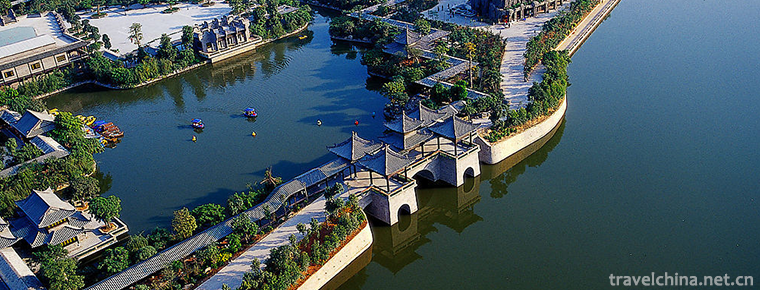
-
Shanghai Museum of Natural History
The Shanghai Museum of Nature (Shanghai Science and Technology Museum Natural Branch) is one of the largest natural museums in China. Located in the center of Shanghai, Address: 260 Yan'an East Road, .
Views: 357 Time 2018-12-15 -
Thousand Buddhas Mountain
Qianfo Mountain is one of the three major scenic spots in Jinan. It was called Lishan in ancient times. Because it was called Shun's farming in Lishan in ancient times, it was also named Shun Mountain.
Views: 196 Time 2018-12-26 -
Shihuadong National Geological Park
Beijing Shihuadong National Geopark is located in Cheying Village, Nancheng Town, Hebei Province, Fangshan District, Beijing. It is a seven-storey karst cave 55 kilometers away from Beijing.
Views: 131 Time 2019-02-08 -
Jade Buddha Garden
Yufo Garden is a famous tourist attraction in Anshan. It is located in the core scenic area of Yufo Mountain. It covers an area of 270,000 square meters. It is surrounded by mountains on three sides a.
Views: 104 Time 2019-03-06 -
Legend of White Horse Dragging
The legend of white horse dragging rein is spread in Baima Temple in Jincheng, Shanxi Province. Baima Temple Mountain was originally named Sima Mountain.
Views: 190 Time 2019-04-03 -
Lantern Opera
Flower lantern opera is a kind of traditional opera widely popular in China. Its prominent feature is that the hands are inseparable from fans and handkerchiefs, singing and dancing.
Views: 289 Time 2019-05-04 -
Sichuan Yangqin
Sichuan Yangqin is one of the representative folk songs of Sichuan Province, which is popular in Chengdu, Chongqing, Luzhou, Zigong and other cities and regions. In the early period, it was also calle.
Views: 182 Time 2019-06-16 -
Soil alkali firing technology
On June 7, 2008, the soil-alkali firing system was approved by the State Council and listed in the second batch of national intangible cultural heritage list..
Views: 389 Time 2019-06-23 -
Calculation with an abacus
Liu Hong (129-210 A.D.), a character Zhuo, a descendant of Liu Xing, the king of Lu in the Eastern Han Dynasty, is an outstanding astronomer and mathematician in ancient China. He is the inventor of a.
Views: 160 Time 2019-08-10 -
Sichuan University
Sichuan University is a national key university directly under the Ministry of Education, and a high-level research-oriented comprehensive university with national layout and key construction in Weste.
Views: 111 Time 2019-08-30 -
North China Electric Power University
North China Electric Power University is a national key university directly under the Ministry of Education. It is a key construction University of "211 Project" and "985 Project Advant.
Views: 245 Time 2019-09-22 -
Rongxian Giant Buddha
Located in the eastern suburb of Rongxian County, Sichuan Province, the Giant Buddha of Rongxian county is carved in the Tang Dynasty. It is a cliff carved statue of Sakyamuni, 36.67 meters high, 8.76 meters long, 12.67 meters wide, 12 meters high and 3.5 meters wide. It is the world's largest Sakyamuni Buddha (Modern Buddha)..
Views: 330 Time 2020-10-15
